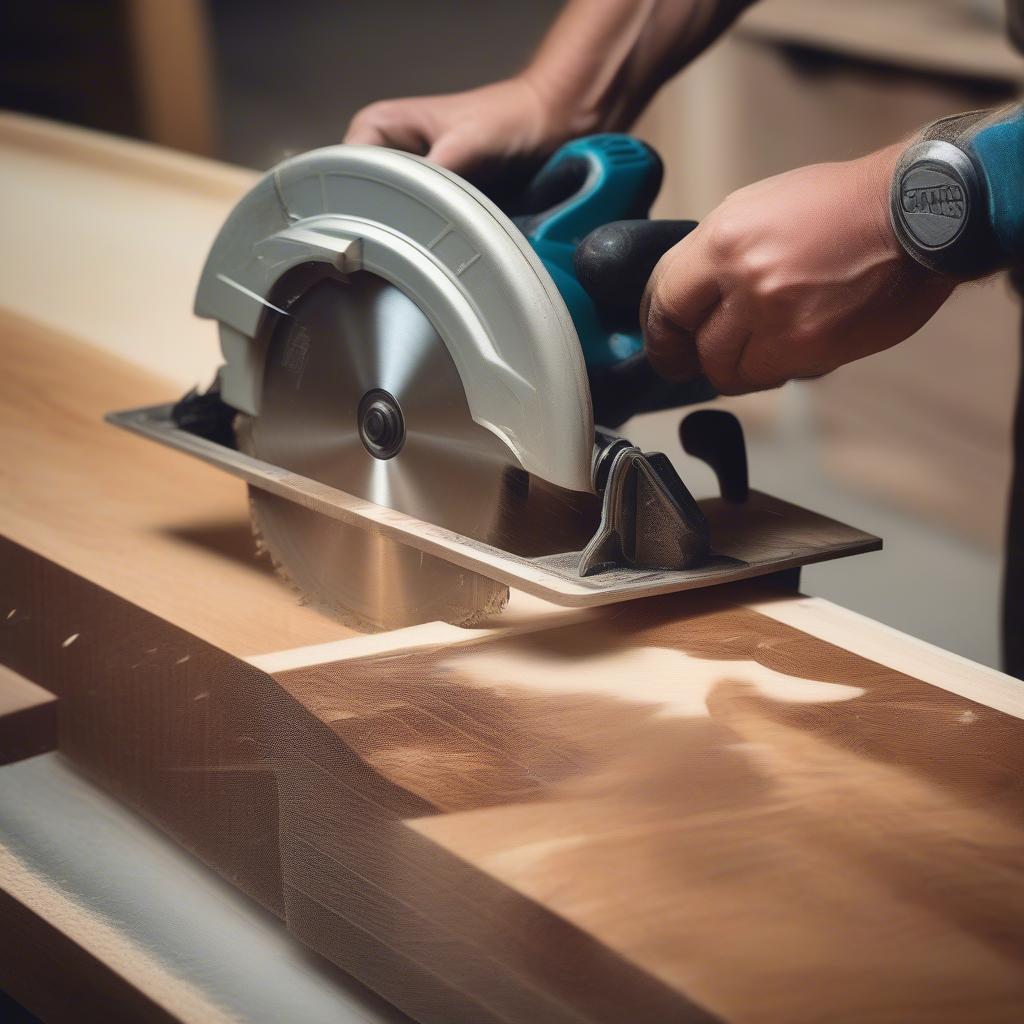Acacia Wood Boards are increasingly popular for various applications, from furniture making to kitchenware. Their rich color, durability, and unique grain patterns make them a sought-after choice for both DIY enthusiasts and professional woodworkers. This guide will delve into the world of acacia wood boards, covering everything from their origins and properties to their diverse uses and care instructions.
Understanding Acacia Wood
 Close-up of an acacia wood board showcasing its rich grain and color
Close-up of an acacia wood board showcasing its rich grain and color
Acacia wood, sourced from acacia trees primarily found in Australia and Africa, is renowned for its hardness and water resistance. These qualities make it an ideal material for outdoor furniture, cutting boards, and other items exposed to the elements. Compared to other hardwoods, acacia wood board offers a unique combination of strength and aesthetic appeal. Its rich, varied grain patterns add character to any piece, ensuring no two acacia wood projects look exactly alike.
The Benefits of Using Acacia Wood Boards
Acacia wood boasts several advantages that contribute to its growing popularity:
- Durability: Acacia wood is incredibly dense and resistant to scratches and dents. This makes it perfect for high-traffic areas and frequently used items like food wooden tray.
- Water Resistance: Due to its natural oils, acacia wood is less susceptible to water damage compared to other wood types. This characteristic is particularly important for outdoor applications and kitchenware like cutting boards.
- Aesthetic Appeal: The warm, reddish-brown tones and distinctive grain patterns of acacia wood add a touch of natural elegance to any space. It’s a great option for creating rustic wood cutting board with character.
- Sustainability: Acacia trees are fast-growing and considered a sustainable resource. They are often harvested from plantations, which helps minimize their impact on natural forests.
Working with Acacia Wood Boards
 A carpenter cutting an acacia wood board
A carpenter cutting an acacia wood board
While acacia wood is durable, it can be challenging to work with due to its hardness. Using sharp tools and proper techniques is crucial for achieving clean cuts and smooth finishes.
- Cutting: Use a sharp saw blade designed for hardwoods. Slow, steady cuts will prevent chipping and splintering.
- Sanding: Start with a coarser grit sandpaper and gradually move to finer grits to achieve a smooth surface.
- Finishing: Applying a sealant or finish will protect the wood from moisture and enhance its natural beauty.
What are the best finishes for acacia wood?
Oil-based finishes are recommended for acacia wood as they penetrate deep into the wood fibers, providing long-lasting protection.
How to prevent warping?
Store acacia wood boards in a cool, dry place away from direct sunlight and extreme temperature fluctuations.
Acacia Wood in Interior Design
Acacia wood has become a trendy choice for interior design, bringing warmth and character to various spaces. From furniture to decorative accents, its versatility knows no bounds. It pairs beautifully with white marble wood creating a striking contrast in textures and tones.
 Acacia wood furniture in a modern living room
Acacia wood furniture in a modern living room
“Acacia wood offers a unique blend of rustic charm and modern sophistication,” says John Smith, a renowned furniture designer. “Its versatility allows it to be incorporated into a wide range of design styles, from minimalist to bohemian.”
Acacia Wood: Price and Availability
The acacia wood price per board foot can vary depending on factors like grade, thickness, and sourcing. It is generally more affordable than some exotic hardwoods while still offering comparable durability and aesthetic qualities. Acacia wood boards are readily available at most lumberyards and online retailers. “The increasing demand for sustainable and durable wood has made acacia a popular choice,” notes Sarah Lee, a timber specialist. “Its affordability and beautiful appearance further contribute to its appeal.”
Conclusion
Acacia wood boards offer a compelling combination of durability, beauty, and sustainability. From crafting stunning furniture pieces to creating functional kitchenware, the possibilities with acacia wood are endless. With proper care and maintenance, acacia wood products can last for years, adding a touch of natural elegance to your home or workspace. So, whether you’re a seasoned woodworker or a DIY enthusiast, consider incorporating the warmth and character of acacia wood into your next project.
FAQ
- Is acacia wood good for cutting boards? Yes, its hardness and water resistance make it ideal for cutting boards.
- How do you clean acacia wood? Use a damp cloth and mild soap. Avoid harsh chemicals and abrasive cleaners.
- Is acacia wood eco-friendly? Yes, it is considered a sustainable resource due to its fast growth rate.
- How do I prevent acacia wood from cracking? Regularly oiling the wood will help prevent cracking and maintain its moisture content.
- Can acacia wood be used outdoors? Yes, its water resistance makes it suitable for outdoor furniture.
- Is acacia wood termite resistant? While naturally durable, applying a sealant adds extra protection against pests.
- Where can I buy acacia wood boards? They are readily available at lumberyards and online retailers.
Common Scenarios and Questions
-
Scenario: You want to build an outdoor dining table. Question: Is acacia wood a good choice for outdoor furniture? Yes, its water resistance makes it a suitable choice.
-
Scenario: You are looking for a sustainable wood option for your kitchen countertops. Question: Is acacia wood a sustainable choice? Yes, it is a fast-growing and renewable resource.
Further Reading and Related Questions
Explore our articles on different wood types and their uses in crafting. Learn more about sustainable woodworking practices and discover various finishing techniques for wood projects.
For any assistance or inquiries, please contact us at My Dinh, Hanoi, Vietnam or San Francisco, CA 94105, USA. We have a 24/7 customer service team ready to help.


